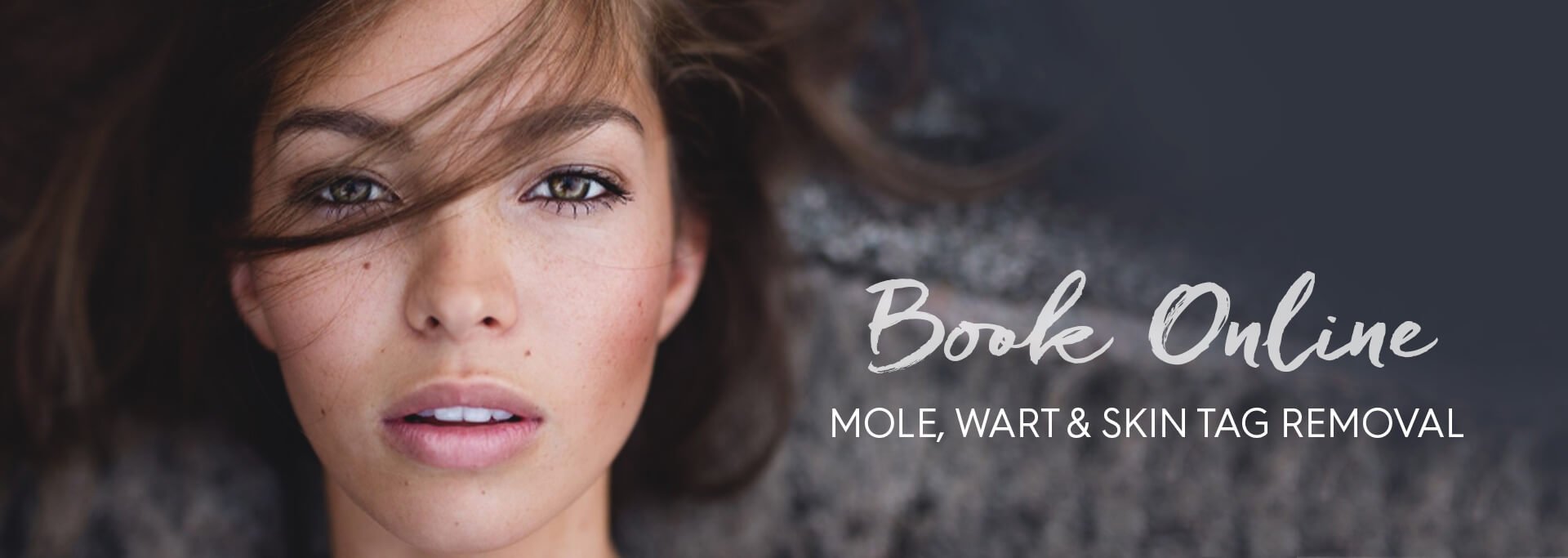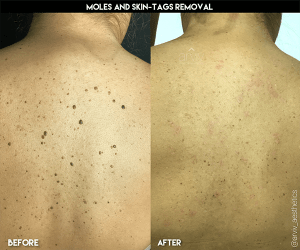
Call (813) 855-0111 to schedule your consultation.
A mole may need to be removed from the skin for several different reasons. Regardless of the reason behind the need for mole removal surgery, putting your trust in an experienced doctor is essential to ensuring the result is both thorough and as aesthetically pleasing as possible. The goal of any surgical mole removal is to provide the patient with satisfactory results through careful removal and minimal scarring. Trusted for medical and cosmetic procedures, Arviv Medical Aesthetics in Tampa provides skilled mole removal using different methods depending on the surgery’s location, size, and purpose.
Purpose of Mole Removal
Many patients seeking plastic surgeon mole removal services have been referred from another physician due to a concern about the size, shape, or color of a mole. Moles that are potentially precancerous should be removed and sent to pathology. Our skilled mole removal doctors take extra care to remove all traces of the mole and, when necessary, some of the surrounding tissue, while still leaving as little scarring behind as possible.
Other patients choose mole removal for cosmetic purposes. Either displeased with the appearance or the mole’s location, patients seek out mole removal to improve the skin’s appearance and improve confidence. If the concern is mole removal on the face, we take extra care to remove only the necessary tissue for a positive cosmetic result. Before a mole removal surgery is scheduled, the physician reviews your concerns, goals, and health history to ensure a smooth procedure resulting in complete satisfaction.
Mole Excision Versus Cauterization
Whether you’re removing your mole for cosmetic purposes or for health reasons, there are two main methods of mole removal: excision with stitches and excision with cauterization. Both of these mole-removal methods are considered surgical procedures, and an anesthetic will be used to numb the area around the mole.
Excision with cauterization involves using a scalpel to shave a mole down to skin level or just below it. This will inevitably cause bleeding, which the doctor will stop using either an electrical instrument or a solution to cauterize the affected area.
Excision with stitches involves a slightly deeper cut than the previous method — will determine how much skin surrounding the mole must also be removed and then draw an outline around it. The entire area is cut out of the body, and stitches are used to close the wound.
Occasionally, doctors may also suggest a punch biopsy to remove a very small mole — a technique that involves a small incision made by a cookie-cutter-like device and send it off to be tested. Finally, you must also consider the cost of pathology — most doctors recommend that the mole may be sent for pathological study to determine whether it’s cancerous.
Care After Mole Removal
Once the procedure is complete, the mole removal doctor provides thorough, clear directions on mole removal aftercare. The wound is bandaged and must be kept clean while healing. Prescription antibiotics or scar cream may be prescribed to keep the wound healthy during the healing process and minimize scarring. If an excision with stitches was performed, a follow-up appointment to remove the stitches is scheduled. The doctor will also follow up to make sure the area is healing properly and provide home care tips for reducing scarring.
If the mole was removed due to concerns, the excised mole is sent to a third-party pathology lab for testing. The pathology results are provided to the patient once they arrive, and the doctor will discuss any further treatment options that may be necessary.
Schedule Mole Removal in Tampa, FL
If you are concerned with a mole on any part of the body for either medical or cosmetic reasons, scheduling an appointment with Arviv Medical Aesthetics is the first step toward a rejuvenated appearance. Contact Arviv Medical Aesthetics to set up a consultation.
